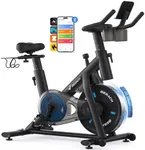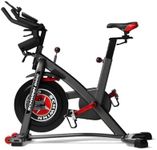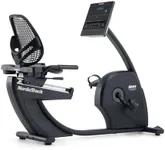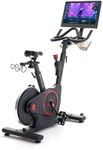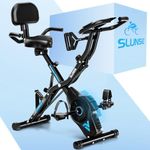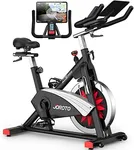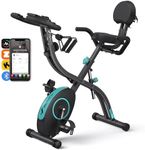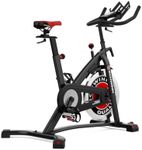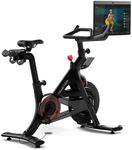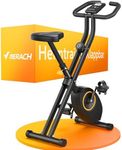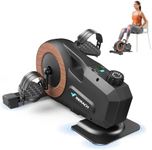Buying Guide for the Best Exercise Bikes
Choosing the right exercise bike can greatly enhance your fitness routine and help you achieve your health goals. When selecting an exercise bike, consider your fitness level, space availability, and the type of workout you prefer. Exercise bikes come in various styles, such as upright, recumbent, and spin bikes, each offering different benefits. It's important to understand the key specifications to ensure you pick a bike that suits your needs and provides a comfortable and effective workout experience.Type of Exercise BikeExercise bikes come in three main types: upright, recumbent, and spin bikes. Upright bikes are similar to traditional bicycles and are great for general cardio workouts. Recumbent bikes offer a more relaxed seating position, which is ideal for those with back issues or who prefer a more comfortable ride. Spin bikes are designed for high-intensity workouts and mimic the feel of road cycling. Choose the type based on your workout preference and comfort level.
Resistance LevelsResistance levels determine how hard you have to pedal to move the bike. This is crucial for tailoring the intensity of your workout. Bikes typically offer magnetic, friction, or fan-based resistance. Magnetic resistance is quiet and smooth, friction resistance is more affordable but can be noisy, and fan resistance increases with pedaling speed. Consider your fitness goals; if you want varied workouts, look for a bike with multiple resistance levels.
AdjustabilityAdjustability refers to how you can modify the bike to fit your body size and comfort. This includes seat height, handlebar position, and pedal straps. Proper adjustability ensures a comfortable and ergonomic workout, reducing the risk of injury. If multiple people will use the bike, or if you have specific comfort needs, look for a bike with a wide range of adjustability options.
Display and FeaturesThe display on an exercise bike can show various metrics like speed, distance, time, and calories burned. Some bikes offer additional features like heart rate monitors, pre-set workout programs, and connectivity to fitness apps. These features can enhance your workout experience and help track your progress. If you enjoy tracking your fitness data or need motivation through guided workouts, consider a bike with advanced display features.
Weight CapacityWeight capacity indicates the maximum user weight the bike can safely support. This is important for ensuring the bike is stable and durable during use. Exercise bikes typically have weight capacities ranging from 250 to 350 pounds. Choose a bike that comfortably supports your weight, and consider a higher capacity if you want a more robust and stable bike.
Size and PortabilitySize and portability are important if you have limited space or need to move the bike frequently. Compact bikes are ideal for small spaces, while foldable models offer easy storage. Some bikes come with wheels for easy transport. Consider the space where you plan to use the bike and how often you'll need to move it when selecting the right size and portability features.

